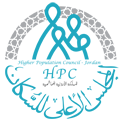

The Higher Population Council views the integration of demographic dimensions into the development process as essential to achieving harmony between population and resources and attaining the goals of sustainable development. Therefore, the government prepared and endorsed the National Population Strategy (2021-2030). This strategy is based on a deep understanding of the direct impact of demographic shifts on the outcomes of economic and social development.
Today, Monday, the Higher Population Council, in cooperation with the United Nations Population Fund, held a meeting for the Steering and Technical Committee of the National Population Strategy to present and discuss the first periodic report on monitoring and tracking the progress of the strategy's performance over the past three years (2021-2023).
The Steering and Technical Committee includes representatives from relevant entities such as: the Ministry of Planning and International Cooperation, the Ministry of Health, the Ministry of Labor, the Ministry of Education, the Ministry of Higher Education and Scientific Research, the Ministry of Social Development, the Ministry of Awqaf, Islamic Affairs and Holy Sites, the Ministry of Energy and Mineral Resources, the Ministry of Agriculture, the Ministry of Environment, the Ministry of Transport, the Ministry of Youth, the Ministry of Water and Irrigation, the Ministry of Local Governance, the Department of Statistics, the National Center for Security and Crisis Management, the Family Health Care Institute, the Jordan Institution for Economic Development/JEDC, the Jordanian National Committee for Women's Affairs, the National Aid Fund, the Vocational Training Corporation, the Civil Service Bureau, the Higher Council for the Rights of Persons with Disabilities, the Development and Employment Fund, the Jordan Broadcasting Corporation, the National Family Council, the Social Security Corporation, the All Jordan Youth, the Hashemite Fund for Human Development, the Family and Juvenile Protection Directorate, the Syrian Refugee Affairs Directorate/Public Security, in addition to the Higher Population Council.
This report was prepared to monitor and track changes in the strategy's performance indicators during the years 2021-2023 in order to measure the extent to which the main and sub-strategic objectives set out in the national plan for monitoring and tracking the progress of the strategy's implementation have been achieved, and to indicate the degree of success or (failure) in achieving the target values for the indicators compared to the actual values, which are distributed according to the strategy's goals and its four axes: the economic and social axis, the women and youth axis, the health and sexual and reproductive health axis, and the migration, asylum, and crises axis.
The Secretary-General of the Higher Population Council, Dr. Issa Al-Masarwa, emphasized that monitoring progress and its contribution to achieving the goals of the National Population Strategy is an ongoing and important process. This reflects the efforts exerted by all relevant parties in all fields, aiming to achieve the set goals. Additionally, the monitoring and evaluation process is crucial for identifying obstacles that hinder the achievement of the policies and implementation plans of the National Population Strategy, thus helping to find appropriate solutions to overcome these obstacles, correct course, and realize the strategy's vision of ensuring that all individuals enjoy a healthy and decent social life and equal opportunities for economic participation
Ali Al-Ghrabali, a health policy expert at the United Nations Population Fund in Jordan, indicated that the report highlighted several strengths, most notably the improvement in a number of health and reproductive health indicators, such as a decrease in the under-five mortality rate and an improvement in life expectancy at birth. However, we note the existence of significant challenges related to the low level of unmet need for family planning and the high rates of cesarean sections compared to global optimal levels, which necessitates strategic interventions to enhance health awareness and provide comprehensive and accessible services. He also highlighted the role of sexual and reproductive health as a key element in development, especially in terms of providing services and information that contribute to achieving demographic balance and improving the quality of life. This comes within the context of Jordan's vision to promote sustainable development and achieve harmony between population and resources, which aligns with the goals of the United Nations Population Fund in Jordan."
Ataf Al-Hadid, Director of the Programs Unit at the Higher Population Council, presented the main findings, challenges, and recommendations related to the economic, social, and social protection axis, as well as the migration, asylum, and crises axis. Badi'a Qabilat, advocacy coordinator at the Council, reviewed the findings, challenges, and recommendations related to the women and youth axis, while Joanna Samawi, coordinator of the reproductive health and gender program, addressed the findings, challenges, and recommendations related to the health and sexual and reproductive health axis.
During the meeting, an open discussion and dialogue took place among participants regarding the achievements, challenges, and recommendations presented in the report, and agreement was reached on the next steps for 2025.







